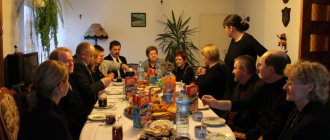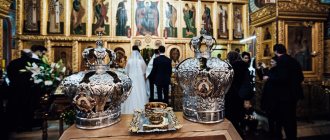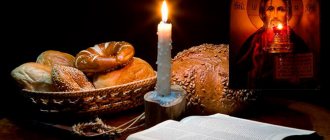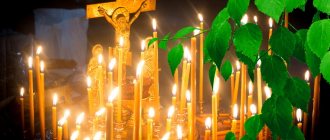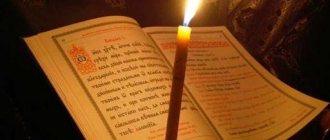Posted on Apr 18th, 2017
by Olya
Categories:
- Blog
Bright Week is the week after Easter. Believers continue to rejoice at the great miracle of the resurrection of the Savior, the victory of life over death, honor Christ, and pray fervently. And such prayers said during Bright Week are especially powerful. We will try to tell you what you can and cannot do at this time in our publication. Let’s not ignore folk customs, signs, and daily rituals.
Celebration of Bright Week - the week after Easter (Red Week, Great, Velikodenskaya)
During this joyful time for all Orthodox Christians, festive liturgies are served in churches and religious processions are held every day. The permit for fast food comes into effect. Weddings and funeral services are prohibited. It is on Bright Week that the dead appear before the gates of heaven, where the Almighty grants them remission of sins.
In the week after Easter, worshipers ask the risen Savior for leniency, forgiveness, faith, and health for themselves and their families. You need to start and end your day with a prayer of gratitude. It is better to do this in a calm environment. Prayers and requests made in the first week after Easter are considered the strongest. Fig2
Easter week 2021 when will it be
Easter week (Bright, Glorious, Great, Joyful, Red, Velikodenskaya, in the Kostroma region - Khristovochka, in the Chernigov region - Gremyatskaya, in Belarus - Easter) - the week after Easter. Starts in 2021 from May 2 (Easter) and lasts until May 8 (Krasnaya Gorka) . In literature you can also find the name Bright Week. A week in Orthodoxy is six days and a week (that is, Sunday). In modern language, a week is a calendar week.
Nevsky Thursday or Easter of the Dead
Among the pagans there was a strong belief in the return of souls. It underwent transformations with the advent of Christianity, but retained its strength. Therefore, no one went to church on Wednesday night. It was believed that there was a service for the dead there and that the living were in danger at such an hour.
Russians have a custom of drawing a large cross on the grave and rolling red eggs on it, glorifying the Resurrection of Christ. Through the years, Ukrainians carried the belief about Rahmans living underground. They don't see the sun, so they can't determine when Easter will come. To inform them about the joyful event, people throw colored shells into the river.
In the Voronezh province the custom of “leading a mare” is still alive. The head of a papier-mâché horse is placed on the pole, the tail is tied to the other end, and covered with an improvised “blanket”. A man dressed as a gypsy walked around the village with a dressed-up stick, offering rides to everyone. Modern Orthodox Slavs celebrate the day of remembrance of the dead on the last day of Maslenitsa - Forgiveness Sunday or on Krasnaya Gorka.
Easter week, what is it?
According to the church calendar, Easter week (Bright Week) is all festive. On Wednesday and Friday, fasting is canceled, so it constitutes one holiday, and each of its days is called Bright. Previously, stories were widely circulated in Russia that Easter week was one day - after the resurrection of Christ, the sun did not set for eight days. The first two days it stood in the east, the next three at noon (zenith), two at sunset, and on the eighth it set.
In large, and especially monastic churches, throughout the entire Easter week, after the liturgy, “artos” (translated from Greek as “bread”) is carried around the temple with a procession of the cross. For this purpose, large bread is specially baked with the image of a cross with a crown of thorns - a symbol of victory over death. It is also possible to depict the image of the Resurrection of Christ. Artos, symbolizing Jesus Christ, was consecrated before the end of the liturgy on Easter Sunday. On Saturday of Easter week, bread is distributed to believers.
The Holy Resurrection of Christ - Easter - the holiday of holidays. I was born in Sarapul - this is the third largest city in Udmurtia, standing on the banks of the Kama River and translated from Chuvash its name means “sterlet”. Since Soviet times, we have had a tradition - to end the Easter week with the celebration of Fomin Resurrection (in 2021 it is May 9). During the atheistic times, out of 21 Sarapul churches, only one survived - the Church of the Resurrection of Christ. For him, Easter is also a patronal holiday. The bishop usually came to Sarapul on Fomino Sunday. Even now, when there are more churches, quite a lot of residents of Udmurtia, Perm Territory, Bashkiria, and Tatarstan come to Sarapul specifically for the Resurrection Church at the end of Easter week.
How to spend Holy Week while preparing for Easter Week
Holy Week 2021 begins on Monday, April 26 and continues until Saturday, May 1 . This is the seventh and last week of Lent, lasting six days. If possible, visit the temple every day during Holy Week and participate in divine services.
Throughout the year there are circles - it is no coincidence that every Wednesday and Friday of the week is fast, and every Sunday is so consonant with resurrection. And Holy Week is when the weekly and annual circles coincide.
Good Monday - I remember the Old Testament patriarch Joseph, sold by his brothers to Egypt, as a prototype of the suffering Jesus Christ. On this day, the gospel story about Jesus’ curse on the barren fig tree (a tree of the mulberry family that produces figs), symbolizing a soul that does not bear spiritual fruits - true repentance, faith, prayer and good deeds, is not forgotten on this day.
Great Tuesday - we remember Jesus’ denunciation of the Pharisees and scribes, as well as the parables spoken by Christ in the Jerusalem Temple.
Great Wednesday of Holy Week - we remember the repentance of the sinner who anointed Christ with chrism (especially consecrated aromatic oil) and thereby prepared Jesus for burial, as well as Judas’ decision to betray Christ to the high priests for thirty pieces of silver.
Maundy Thursday - the Last Supper, at which Jesus washed the feet of the disciples, the prayer of Christ in the Garden of Gethsemane and the betrayal of Judas are remembered.
Good Friday - we remember the condemnation to death, suffering on the cross and death of Jesus Christ, as well as the removal of his body from the cross and burial.
Holy Saturday of Holy Week is dedicated to the remembrance of the burial and stay in the tomb of the body of Jesus Christ and the descent of Christ into hell.
Each day of Holy Week is great and comparable to a special event that left a significant cultural mark, familiar even to people far from the Church. Take, for example, the parable of the kiss of Judas. Some Christians confess and receive communion every week. Some only post long posts – four times a year. But, if you are a believer, the Great Wednesday of Holy Week is very important, when it is necessary to confess. Each of us has encountered betrayal and the bitter feeling it leaves behind. Therefore, it is important to repent on this very day, so as not to become like Judas himself.
In connection with the special remembrance of the Last Supper on Maundy Thursday, even those Christians who maintain the practice of rare communion strive to receive communion. After all, it was on Maundy Thursday that Jesus Christ instituted this sacrament.
Feast of Baths on Tuesdays after Easter
On the second day of the week, it was the turn of the fair half to visit friends. But now these conventions are rarely observed. Usually the whole family comes to visit.
As the name implies, dousing was not limited to Monday. But this time a portion of cold water went to those who slept through the morning service. This custom is mentioned in the Gustino Chronicle as a tribute to the Mother Raw Land, the cult of which existed long before Christianity.
While the young villagers were having fun, the adults were looking for duckweed flowers, and when they found them, they began to trample them, hoping to live another year. A large swing was installed in the middle of the village. While riding, people asked for a good harvest. According to another belief, with every breath of wind, bad thoughts and feelings left a person.
How to prepare at home for Easter week 2021
The entire Great Lent and Holy Week are preparations for the Bright Resurrection of Christ and Easter Week.
There is no rule established by the Orthodox Church that on Maundy Thursday you need to paint eggs and bake Easter cakes. This is one of the biggest misconceptions, comparable only to the religious significance of Thursday salt. There are extremely well-established folk customs and a popular idea about black salt, which is supposedly prepared during Holy Week on Maundy Thursday at the church, and then distributed at the service.
Coloring eggs and baking Easter cakes used to be done starting from Maundy Thursday, since this was associated with certain difficulties in the technology of preparing dishes and with their large volume. Now you can cook Easter dishes on both Friday and Saturday. To help cooks, there are small household appliances and a stove that bakes without pre-heating for a long time. There are no restrictions on “rights”.
During Holy Week there are no special prohibitions or rules for preparing dishes for the festive Easter table. The set depends entirely on the hostess; there is only a mandatory dish - Easter eggs. According to one of the established versions, their obligatory presence is associated with the meeting of Mary Magdalene and Emperor Tiberius, when, after the words: “Christ is Risen!” chicken eggs turned red. Everyone is allowed to paint eggs and prepare Easter treats; there are no restrictions either. Atheists, children, believers can all take part in preparing the holiday.
Interestingly, in our region there are quite a lot of not just interethnic, but also interfaith families. I have never heard of any gastronomic conflicts, but I know a lot of examples when a Muslim wife paints eggs, prepares Easter cheese and bakes Easter cakes.
There is only one general rule regarding the preparation of Easter dishes - everything we do, we do with love. I myself will paint the eggs the old fashioned way - with onion skins. I don’t know what the secret is, but they always seem incredibly tasty to me.
You can bless the prepared dishes starting from Vespers on Great Saturday, at the end of the Easter service on the night from Saturday to Sunday and on the morning of Easter Sunday, that is, on Easter, May 2.
Games and fun
Throughout the entire Bright Easter week, people had fun, every day they went to visit, gathered with loved ones for a festive meal, and then sang, danced, danced in circles, had fun in every way, and were simply happy. Among the common Easter fun, unfortunately lost or forgotten today:
- Round dances, which were led by people holding hands, changing the direction and pace of movement to musical accompaniment or choral chants.
- Egg rolling. All participants place their colored eggs in a semicircle near a low slide or on an inclined surface, after which one of them rolls his egg on top, trying to knock down as many of the others as possible. The player takes all the beaten eggs for himself, but if nothing works out, then he loses his own. Participants had to beautifully and originally paint their eggs so that they could be easily distinguished from others. By the way, this tradition comes from pagan times, where it was called upon to awaken the forces of the earth and ensure a good harvest.
- Bride's choice.
The girls stood in pairs one after another, and a young man walked along the resulting “corridor”, who was supposed to take away the girl he liked. Then, without letting go of his chosen one, he learned from his friends about her merits; if, after hearing this, the young man kissed the girl, then they remained a couple until the end of the holiday festivities. - Swing. This fun was one of the most favorite during the holidays. The youth swung on the swings, and the rest of the people watched. Often the rides were accompanied by cheerful and playful chants, often with a hint of imminent matchmaking. The girls always occupied the swings first, and the guys either rocked them or sat next to them. The girls thanked their gentlemen for swinging, giving them colored eggs.
By the way, it was believed that while riding on a swing, the wind would blow away sins from a person.
What to do with the shells of eggs blessed in church for Easter week
Previously, the shells of colored eggs were buried in the ground; some, especially in villages, used them to feed livestock and poultry. Now in comfortable housing without fireplaces and stoves, inedible leftover food from the Easter table ends up in the trash. And this is wrong!
I advise, on the one hand, to avoid excessive fanaticism, and on the other, to be more careful when decorating the festive table and dishes. So, artificial flowers are initially not welcome. It’s also not worth using stickers and then consecrating these eggs. Just think: what will you, your family and friends do with them later? Especially if the sticker is not just some kind of ornament or design, but an image of an icon with the face of Christ, the Most Holy Theotokos. Would any Christian really raise his hand to break such an egg, and then?! To avoid temptations, think before using this or that decoration. It’s better to let everything be natural, natural – from nature.
Folk rituals of Week
The main role in the celebration of Bright Week was given to the commemoration of the departed.
This was not consistent with the church doctrine of universal joy from the Resurrection of the Lord. But our ancestors were sure that during this week the spirits of deceased relatives return to the world of the living to share food and shelter with them. The first and fourth days of the week were considered funeral days. According to tradition, it was supposed to visit cemeteries, leave gifts on tombstones and invite the deceased to visit. Therefore, the doors were left open, and towels hung on the windows like flags.
Housewives did not sew, so as not to blind the spirits, and did not wash clothes. It was forbidden to cry and lament - this could upset the deceased relatives and prevent them from existing peacefully in the next world. Another part of the rituals related to the revival of life, family and procreation. This week began the festivities and bride viewings.
Each region had its own traditions. For example, in the Arkhangelsk province, girls in elegant dresses played bacha in the square. The entertainment was to knock down a wooden figurine from a pole. In the Oryol province, unmarried women gathered separately from men, cooked food and had a good time. A kind of “beauty contest” was held in Ryazan, after which races were held among the fair sex.


